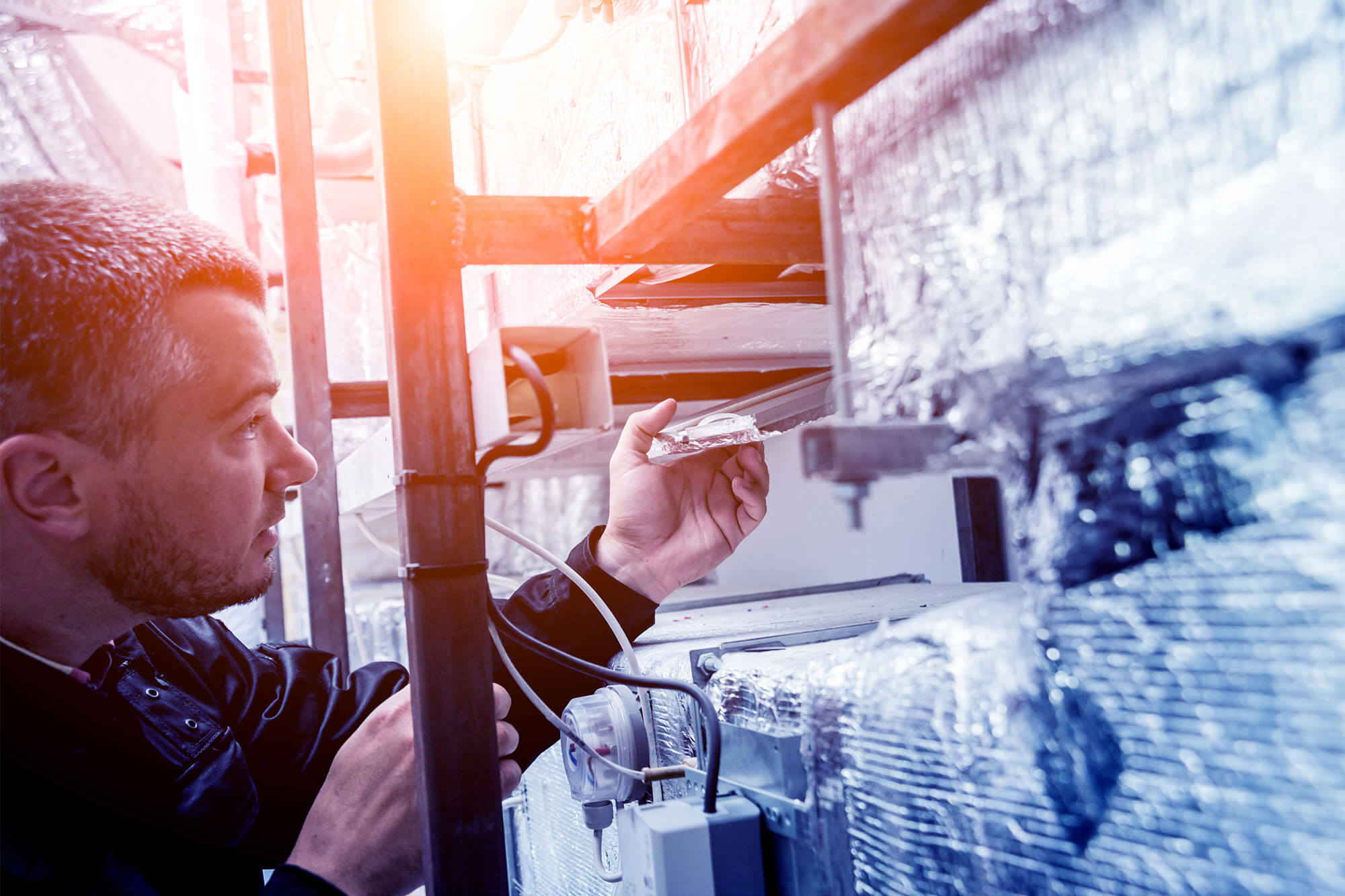
Demand-Controlled Ventilation: The Invisible Shield Promoting Indoor Air Quality and Energy Efficiency
Matthew Maleki, Business Development Manager and IAQ Champion at CIAT UK, explores the energy-efficient and protective role of demand-controlled ventilation (DCV) systems in maintaining a safe and healthy environment where traditional ventilation solutions fall short.
The irony about the safe harbours we build to protect ourselves from threats to our health and wellbeing is that, often, they harbour even more threats to our health and wellbeing. That’s because – due to ever-increasing thermal efficiency – they’re just as effective at keeping toxins in as they are at keeping the elements out. Between carbon dioxide (CO2) buildup and volatile organic compounds (VOCs) released from everyday materials, the mounting risks have drawn the declaration that "Poor air quality is the largest environmental risk to public health in the UK." (UK Gov1). It’s a sentiment matched by the UN’s2 assertion that "Climate change is the single biggest health threat facing humanity."
Certainly, technology is part of the problem. But it’s also part of the solution. When it comes to protecting our health and the climate, DCV technology has an important role to play. It is arguably one of the most effective safeguards for indoor spaces, serving as an air quality watchdog and proponent of efficiency and sustainability.
The Challenge of Indoor Air Quality
Traditional ventilation systems often operate on fixed schedules or manual intervention, resulting in inadequate ventilation or unnecessary energy waste. Systems in unoccupied spaces may continue to churn out fresh air, expending energy without tangible benefit. Conversely, sudden spikes in occupancy can overwhelm these systems, leading to stuffy atmospheres and the buildup of harmful pollutants.
Here, CO2 plays a vital role as a reliable indicator of room occupancy and overall ventilation effectiveness. There are also health risk factors to consider. At sea level, we breathe around 8.6 m3 of air daily while resting, which produces about 785 gm of CO23. These CO2 levels increase through our respiration, and as people gather, CO2 concentration rises. While increased CO2 concentration doesn't pose an immediate threat, at high levels, it causes:
- Reduced cognitive function and decision-making abilities
- Increased fatigue and headaches
- Heightened sick-building syndrome symptoms
- Exacerbation of respiratory ailments
- Dry skin and irritated eyes
The most notable threats are VOCs, organic chemical compounds characterised by intensified volatility, mobility and degradation resistance. These compounds are emitted by myriad sources, including building materials, cleaning products, and personal care products, contributing to the UK’s average indoor air pollution being 3.5 times higher than outdoors4. This has short- and long-term health consequences ranging from mild irritation to severe health conditions – both physical and neurological5.
For perspective, WHO data6 illustrates the significance of poor IAQ, which causes diseases resulting in nearly 3.2 million deaths globally every year.
DCV: A Dynamic Solution
DCV systems offer an intelligent solution to help combat these challenges. Equipped with advanced sensors, they constantly monitor indoor air quality metrics like CO2 levels and particulate matter (PM) concentrations. This real-time data guides DCV systems to adjust ventilation rates accordingly and on the fly.
The benefits of this invisible shield are multi-faceted:
- Tailored Air Quality: DCV ensures ventilation matches current occupancy levels and pollutant presence. This promotes good ventilation while optimising air quality for those within the space and can be checked in real-time using IAQ monitors.
- Comfort and Productivity: Good indoor air quality supports wellbeing and mental focus. The evidence is resounding; well-ventilated, low-contaminant spaces enhance productivity by up to 11%, boost cognitive performance, reduce absenteeism and neurological conditions, and promote overall satisfaction.7,8,9,10,11
- Energy Efficiency: DCV systems significantly reduce ventilation energy consumption by optimising fresh air intake and operating fans only when necessary. This translates into direct cost savings and a lowered carbon footprint for buildings.
It’s worth briefly expanding on energy efficiency because DCV systems offer significant benefits over traditional ventilation approaches.
Energy Efficiency Advantage
A key advantage of using DCV is reducing start-up and shutdown energy loss common in systems that cycle intermittently throughout the day. DCV runs more continuously, avoiding the energy surge of frequent restarts.
DCV systems also intelligently integrate with auxiliary equipment such as humidifiers and dehumidifiers, activating them only when required. This targeted approach reduces unnecessary operation and energy consumption.
Additionally, DCV improves overall building envelope performance. By maintaining slight positive pressure, they minimise the infiltration of unconditioned air, lessening the load on heating and cooling systems and contributing to substantial energy savings.
How DCV Systems Work: Sensors, Signals, and Intelligent Adjustment
At the heart of a DCV system lies its air quality sensors, strategically placed to monitor the environment. They continuously provide data that guides the ventilation system's response. The most common are CO2 and PM sensors, offering a reliable snapshot of occupancy levels and particulate matter concentrations. Sensors like mixed gas sensors offer a more nuanced analysis of specific volatile compounds in areas where VOCs might lurk (think cleaning product storage, kitchens, or bathrooms).
DCV systems use this data to adjust various components:
- Air Mix Dampers: In installations equipped with air mix dampers, adjusting the ratio of fresh to recirculated air is the first line of defence. The DCV system uses dampers to increase the proportion of fresh air introduced, minimising the need to ramp up fan speeds.
- Ventilation Fans: Whether acting as the primary control or in situations with no dampers, supply and return air fans form the backbone of ventilation adjustment. DCV systems carefully fine-tune fan speeds, ensuring the desired fresh air exchange is achieved with minimal energy expenditure.
- Local Heating/Cooling: DCV doesn't operate in a vacuum. It works in tandem with local heating and cooling systems to maintain comfort while maximising energy savings. Whether it's radiators, underfloor heating, or chilled beams, the DCV system ensures that temperature needs are met efficiently. This integration extends to air conditioning units – DCV adjusts airflow with consideration for the heating or cooling demands, preventing unnecessary work and energy waste.
System Design and Complexity
The complexity of a DCV system depends on the specific building and its ventilation layout. Simpler systems might primarily control fan speeds, while more advanced setups include air mix dampers, integrate with humidity control systems, and even interact with automated windows or blinds. Regardless of the complexity, DCV's core principle remains the same: gather precise data and intelligently act on it to optimise the indoor environment while conserving resources.
An Invisible Shield for Our Health and Climate
DCV systems are a win-win for cleaner air and lower energy bills. By carefully adjusting airflow based on need, DCV reduces the energy drain from powerful fans. When combined with heat recovery technology, DCV dramatically reduces the energy needed to bring in fresh, healthy air. It's an intelligent way to improve the air we breathe while lightening the load on energy costs.
Discover CIAT’s approach to improving IAQ at #CIAT4life.





